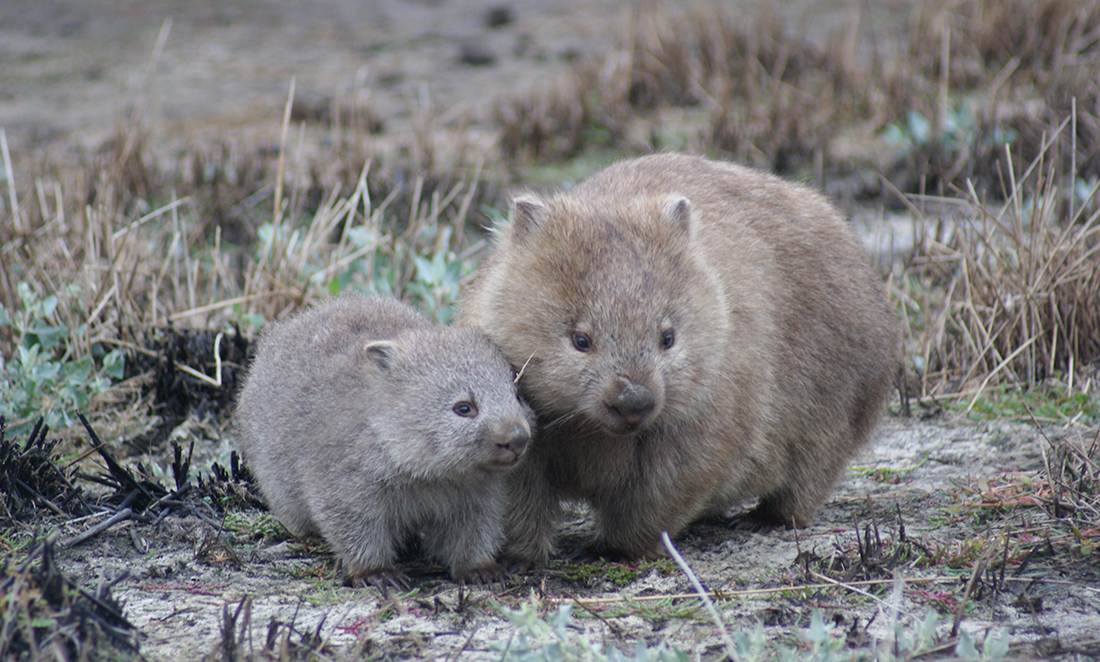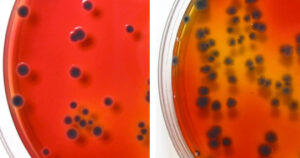OK, first things first. Wombats do cubed-shaped poos. Now you know.
It’s been thought in the past that this distinctive shape was formed at the – ahem – point of exit. But thanks to some new research by University of Tasmania wildlife ecologist Dr Scott Carver and a team spanning Australia and the US, we now know these cubes are shaped before they ever see the light of day, in the digestive system.
What’s more, this research (published in the appropriately named Royal Society of Chemistry journal Soft Matter) was awarded the prestigious 2019 Ig Nobel prize at Harvard University for “research that makes you laugh then think”.

ACCIDENTAL POO
Like Alexander Fleming and his discovery of penicillin, Scott made his discovery by accident. While dissecting a deceased wombat as part of his primary research into treating mange disease, he found a cubed shaped poo inside the animal’s intestine.
“The faeces are cubed inside the last metre of the intestine, meaning they are formed into cubes while still inside a soft tube,” said Scott.
“This is a completely new way of forming a cube shape.”
Scott and his team discovered, through a combination of lab leg work and mathematical models, that two stiff regions and two more flexible regions around the circumference of the wombat intestine shapes the poo while the body dries it out.
Or, to put it scientifically, “The combination of drying out of the faeces in the distal colon and muscular contractions forms the regular size and corners of the faeces.”
OK, BUT … WHY?
At this point, you may be asking yourself why wombats do cubed-shaped poo. Could there be an evolutionary reason? According to Scott, this odd behaviour could be how wombats communicate with each other.
“The bare-nosed or common wombat is a relatively solitary animal. One of the ways they communicate is through smell.”
“They do a lot of this by depositing faeces in prominent locations – on a rock, a log or a small rise on the ground.”

These stinky displays are a way that they’re able to communicate to their wombat brethren.
“We believe that by ‘cubing’ the faeces, the wombats are able to help aggregate the faeces into one place.”
Essentially, this means that wombats make their poo stackable so it can be used to communicate with each other. After all, if their faeces were spherical, it could potentially roll away, making its use as a communication tool somewhat limited.
This is similar to how cats rub up against points in a house – although it is important to note that wombats are not territorial like cats.
“Wombats have overlapping home ranges – the faeces are a form of social communication.”

APPLICATIONS
Scott’s research shows that there are other ways to think about how to make cubes.
“The way people make cubes at the moment is by folding an object or moulding it through injection moulding or cutting something into a cube shape or pushing it through an aperture like you do with pasta.”
“This is a completely new and gentle way of creating a cube. It’s particularly applicable for substances that are soft and wet. This may have application to manufacturing when trying to ‘coax’ delicate substances into cube shapes.”
So next time you see a wombat just sitting there, don’t assume it’s being lazy. For all you know, it’s using industry-upending techniques to delicately craft its next piece of cube-shaped social communication.









